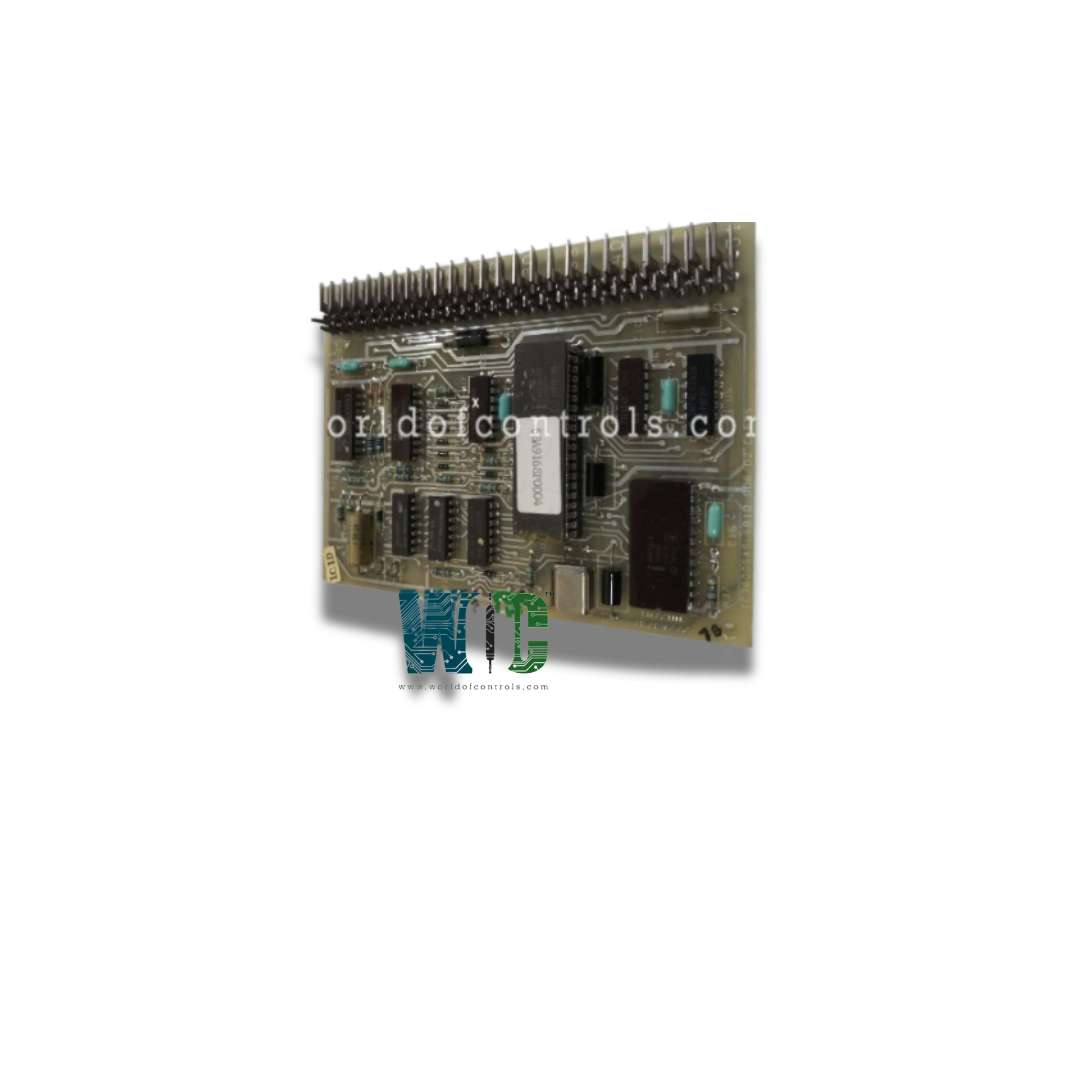
World Of Controls understands the criticality of your requirement and works towards reducing the lead time as much as possible.
IC3600SASC1C1E - MicroSynchronizer Card is available in stock which ships the same day.
IC3600SASC1C1E - MicroSynchronizer Card comes in UNUSED as well as REBUILT condition.
To avail our best deals for IC3600SASC1C1E - MicroSynchronizer Card, contact us and we will get back to you within 24 hours.
SPECIFICATIONS:
Part No: IC3600SASC1C1E
Manufacturer: General Electric
Product Type: MicroSynchronizer Card
Series: Mark II
Input Voltage: 24V DC
Frequency Range: 45 – 65 Hz
Operating temperature: -30 to 55 ºC
Voltage Matching Range: ±10%
Frequency Matching Range: ±0.05 Hz
Communication Interface: RS-232 / RS-485
Mounting Type: DIN Rail / Panel Mount
Power Supply Voltage: 24 V dc
Board Size: 2.8 cm high x 8.6 cm
Weight: 0.45 kg
Availability: In Stock
Country of Origin: USA
FUNCTIONAL DESCRIPTION:
IC3600SASC1C1E is a MicroSynchronizer Card manufactured and designed by General Electric as part of the Mark II Series used in GE Speedtronic Control Systems. A MicroSynchronizer Card is a specialized electronic module used in turbine control systems to ensure that a generator synchronizes correctly with the electrical grid. Synchronization is a critical process that involves matching the generator’s frequency, voltage, and phase angle to the grid before connecting it. If a generator is not properly synchronized, it can lead to severe equipment damage, operational instability, or even system-wide failures. The MicroSynchronizer Card automates this process, making it more precise and reliable compared to manual synchronization methods.
One of the key functions of a MicroSynchronizer Card is to continuously monitor and adjust the generator’s speed and voltage so that it aligns with the grid’s parameters. It works in coordination with other control components, such as the Automatic Voltage Regulator (AVR) and the governor system, to fine-tune these parameters in real time. Ensuring a smooth and seamless connection prevents sudden power fluctuations that could impact both the generator and the grid.
FUNCTIONS OF A MICRO SYNCHRONIZER CARD:
A MicroSynchronizer Card is a critical component in turbine control and power generation systems, responsible for ensuring the safe and efficient synchronization of a generator with the electrical grid. Its primary functions include frequency matching, voltage regulation, phase angle alignment, protection mechanisms, and communication capabilities.
WOC has the largest stock of OEM replacement parts for GE Speedtronic Gas Turbine Control Systems. We can also repair your faulty boards and supply unused and rebuilt boards backed up with a warranty. Our team of experts is available round the clock to support your OEM needs. Our team of experts at WOC is happy to assist you with any of your automation requirements. For pricing and availability on parts and repairs, kindly contact our team by phone or email.
What parameters does a MicroSynchronizer Card monitor?
A MicroSynchronizer Card monitors the frequency, voltage, and phase angle of both the generator and the grid. It ensures that the generator’s frequency matches the grid (typically 50 Hz or 60 Hz), the voltage is within an acceptable range, and the phase angle is aligned before synchronization.
What communication protocols are supported by MicroSynchronizer Cards?
Many MicroSynchronizer Cards are designed to integrate with SCADA and DCS systems for remote monitoring and control. They typically support communication interfaces such as RS-232, RS-485, Modbus, Ethernet, and CAN bus.
What is the typical response time of a MicroSynchronizer Card?
The response time of a MicroSynchronizer Card is usually less than 100 milliseconds, allowing it to make rapid synchronization decisions. This fast response ensures minimal delay in generator connection, reducing downtime and improving power stability.